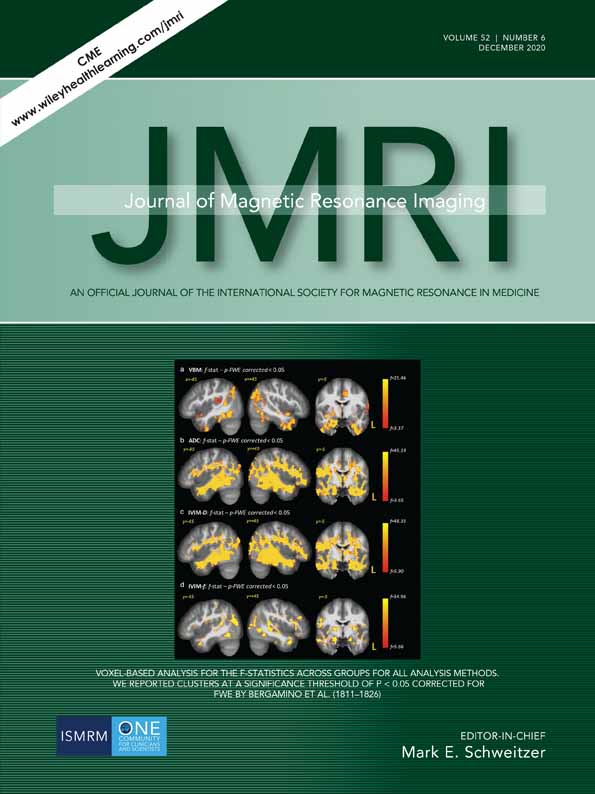Altered Whole-Brain Functional Networks in Drug-Naïve, First-Episode Adolescents With Major Depression Disorder
Contract grant sponsor: Henan Province Medical Science and Technology Research Project; Contract grant number: 2018020349.
Abstract
Background
Neuroimaging studies have demonstrated disrupted brain functional networks in major depression disorder (MDD); however, alterations to whole-brain networks specifically associated with adolescent MDD remain poorly understood.
Purpose
To investigate the topological architecture of intrinsic brain functional networks in drug-naïve, first-episode adolescent MDD patients using graph theoretical analysis.
Study type
Prospective.
Subjects
In all, 109 adolescent MDD patients and 70 healthy control subjects.
Field Strength/Sequences
3.0T; gradient-echo echo-planar imaging sequence.
Assessment
After the construction of whole-brain functional networks by thresholding partial correlation matrices of 90 brain regions, we calculated the topological properties (eg, small-world, efficiency, and nodal centrality) using graph theoretical analysis.
Statistical Tests
A chi-squared test was used to compare the gender-ratio difference, and a two-sample t-test was used in the comparison of age. We compared network measures between the two groups using nonparametric permutation tests. Exploratory partial correlation analyses were used to determine the relationships between the topological metrics showing significant between-group differences and the clinical variables for adolescent MDD patients.
Results
Small-world architecture in brain functional networks was identified for both the MDD and control groups. However, depressed adolescents exhibited lower characteristic path length, normalized characteristic path length and clustering coefficient, and higher global efficiency than controls (false discovery rate [FDR] q < 0.05). Compared with controls, depressed adolescents exhibited increased nodal centralities in the default mode regions, including the right anterior cingulate and paracingulate gyri, left posterior cingulate gyrus, right superior frontal gyrus (medial part), bilateral hippocampus, and bilateral parahippocampal gyrus, and decreased nodal centralities in the orbitofrontal, temporal, and occipital regions (FDR q < 0.05).
Data Conclusion
This study indicated that drug-naïve, first-episode adolescent MDD patients exhibit disruptions in whole-brain functional networks.
Level of Evidence
1
Technical Efficacy Stage
2 J. MAGN. RESON. IMAGING 2020;52:1790–1798.
Open Research
Data Availability Statement
The data that support the findings of this study are available from the corresponding author upon reasonable request.




